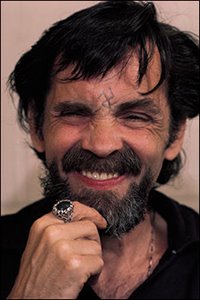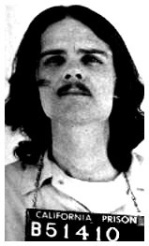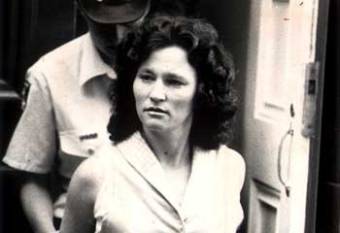Full article and slide show here.
As her thoughts turned to renewal and hope each spring, Cherrie Letter would call the funeral home to ask about the murdered prostitute. For 26 years the answer remained the same. The young woman’s family never claimed her ashes. They languished in a simple urn stored on a shelf.
But Letter couldn’t forget Jennifer Lisa Smith. The two were forever connected by what happened one night in 1987.
That Friday in August, Smith’s screams brought Letter running out the door of an Oak Grove restaurant where she was talking with a friend. Letter saw the 25-year-old Smith lying naked in the parking lot — the final victim of Oregon’s most prolific serial killer Dayton Leroy Rogers.
Letter knelt beside the bleeding woman, trying to stanch the flow from the wicked stab wounds, telling her to hang on until help arrived. But Smith died at the hospital.
The killer had taken off in his truck, chased by a man in a car. Rogers raced through Milwaukie and Gladstone at speeds up to 100 mph. But the man was able to note the license plate to the pickup and deputies arrested Rogers that afternoon. A fingerprint matching Smith’s right ring finger was found on the outside of the truck’s passenger door. The case led to Rogers’ conviction and he’s now in the Oregon State Penitentiary.
Letter, 32 at the time, learned that Smith’s body went to Finley-Sunset Hills Mortuary off of U.S. 26. She sent flowers and a card to the funeral home for Smith’s family.
“I expressed my sorrow,” she recalled. “I wanted her family to know that she was a brave woman who fought for her life. I wanted them to be comforted to know that she wasn’t alone. I was there with her.”
Smith’s family never replied.
“After six months I called the funeral home,” Letter said. “The card and flowers hadn’t been picked up. Her ashes were still there.”
When she checked again six months later, no change.
“All of that made me to not want Jenny to be forgotten,” Letter said. “So I started calling the funeral home each year with the sense of hope that her family picked up the ashes. I prayed for Jenny and her family.”
Each year, the same call.
And each year, the same answer.
“I felt such profound sadness,” Letter said. “No one cared.”
But she did.
***
A month ago, in late February, it was time to call again. The ritual had become her way — like the way some people light a candle in a church — to honor Smith’s memory. Long ago, Letter had realized the similarities between their two lives.
Now 58, Letter had once worked for the Portland Police Bureau’s vice squad. She was 19 and earned college class credit and a bit of money to pose as a hooker to help cops arrest customers who trolled for women like Smith, known on the streets as Gypsy Roselyn Costello. Letter knew that no girl decides to grow up and be a prostitute. Smith had been forced to make some terrible choices to survive.
And in 1983, when Letter was in her late 20s, a man broke into her Southeast Portland home and sexually assaulted her. When she managed to escape, the intruder — later caught and convicted — chased her down, stabbed her five times and beat her in a parking lot, breaking her collarbone and smashing her head onto the pavement.
This year, Letter made the call with a sense of urgency. Cancerous tumors have spread through her body. While doctors plot a course of action, Letter — divorced with a daughter and granddaughter and living near Lincoln City — feels time is precious.
“The clock is ticking and I’m not sure how many ticks I have left,” she said. “Her own people never came to get her. When I go, everyone will have forgotten about Jenny.”
Letter said she started to recount her tale to the funeral home receptionist and was transferred to Evone Manzella, the mortuary manager hired six months earlier after moving from California.
“The call seemed strange,” Manzella said. “It was almost hard to believe the story. But there was something in her voice that touched me.”
Before getting into the funeral industry, Manzella had worked as a 9-1-1 dispatcher in Northern California. One call in particular haunts her.
“A young woman was being attacked and got away to call for help,” she said. “I took it. She was on the phone with me when the attacker chased her down. I heard her die.”
Manzella took Letter’s telephone number and said she’d get back to her.
After checking the Internet to verify Letter’s account of Smith’s murder, Manzella found a ledger book in the mortuary’s office safe. She flipped through the pages and found Smith’s name. Her unclaimed cremated remains had been at the home longer than anyone on record.
A file showed that in 1987 Smith’s parents had paid to have the mortuary take care of their daughter’s body. When they didn’t pick up the remains, the funeral home left phone messages and sent certified mail. They never responded. At a certain point, the mortuary decided to wait for them to come forward.
Manzella was moved by what she found out.
“I’m a mom,” she said. “I would hope that no child is ever forgotten.”
She was also impressed with Letter.
“Here’s this woman who has been carrying this burden for so long,” she said. “The right thing was to do something for both of these women.”
Manzella took the story and the records to the funeral home managers. Her bosses were amazed that someone who wasn’t a family member had cared for so long. They donated a niche in the ornate mausoleum and provided a bronze faceplate engraved with Smith’s name, birthday and the day she died.
When the paperwork had been completed, Manzella called Letter. They planned a memorial service for a day last week. Letter said she’d be there, along with two members of the clergy she asked to say a few words.
But about 15 minutes before the service, the receptionist told Manzella that Letter had called to say that one of her tumors had put pressure on her adrenal gland, causing her blood pressure to skyrocket and her heart to race. As a precaution, doctors wanted her spend the night in the hospital.
Three days later, when Letter felt better, the funeral home held a second memorial.
As services go, it was the smallest in the funeral home’s history: Letter, Manzella and a couple employees, one of whom would screw the faceplate over the niche.
Standing before the wall where Smith’s remains would be laid to rest, Letter reached into her purse and pulled out a small piece of blood amber in the shape of a heart that she found at the beach more than 25 years ago. She opened the urn’s lid, set the amber inside and closed it again.
“This,” she said, “goes with her.”
After the urn was placed in the niche and the faceplate solid, Letter walked to her car and pulled out 25 white helium-filled balloons.
Each one represented a year in Smith’s life.
She let them loose.
“Fly, Jenny,” she said. “Fly.”
— Tom Hallman Jr.
By Tom Hallman Jr., The Oregonian
This article made me tear up. How beautiful and inspiring. The people who work for the mortuary are outstanding and Ms. Letter is amazing.











